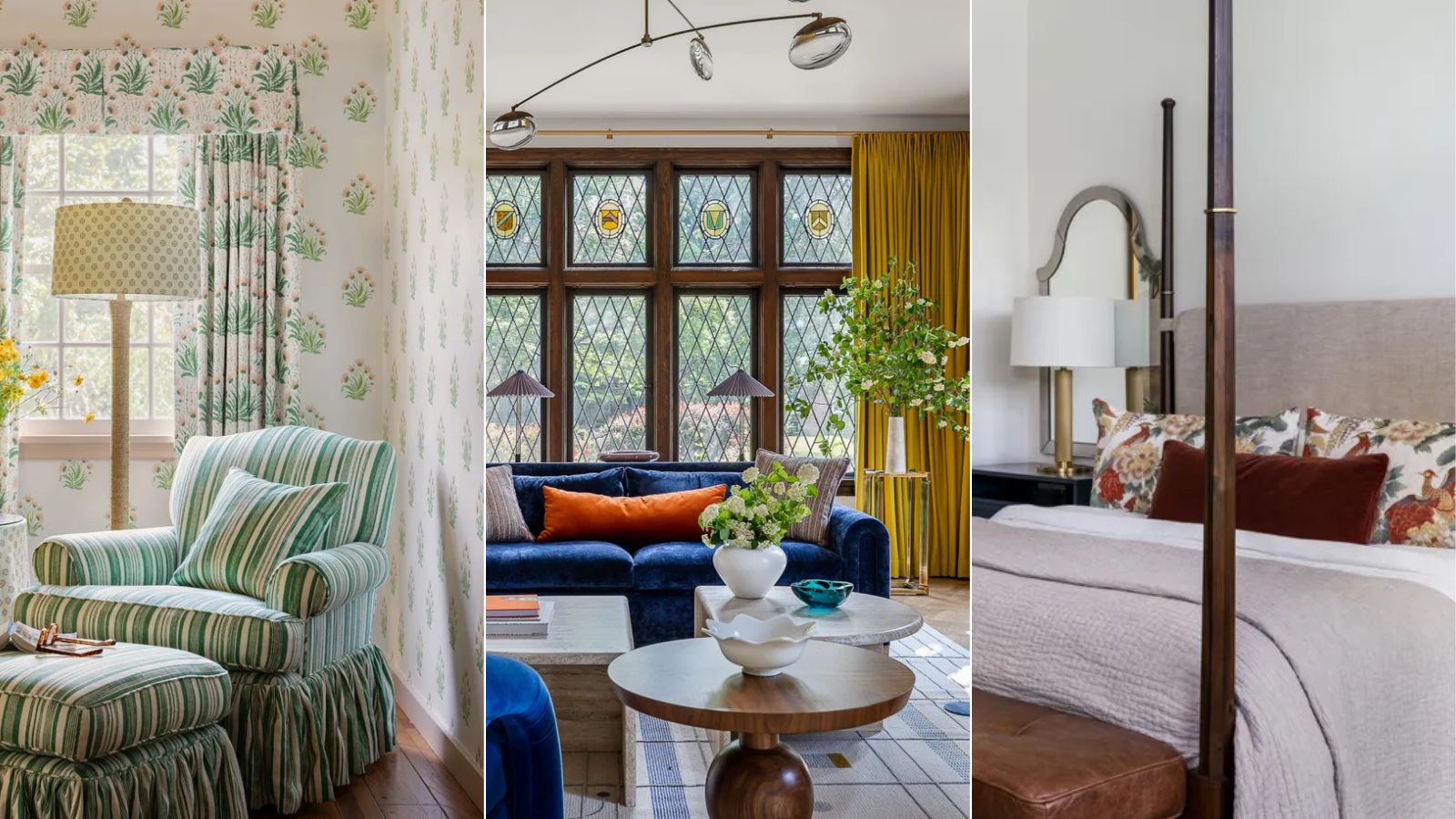
Decorating with fabrics is guaranteed to add depth, texture, and interest to your interior schemes. Beyond the expected use of fabrics in rooms like bedrooms, fabrics can add charm to every room in the home when used effectively.
But when it comes to decorating with multiple fabric trends, it's worth knowing which work well together, ensuring harmony flows throughout the space and a sense of balance is achieved.
So, what are the best fabric combinations? We asked designers for their favorite pairings to give you some tried and tested ideas for your next home decor project.
Designers' favorite fabric combinations
Decorating with pattern is a fundamental part of creating fabric combinations, with many designers using color and print to elevate the textural appeal of fabrics.
'Pairing different textures and patterns is the key to creating interesting and pleasing fabric pairings,' says interior designer Nadia Watts.
From linen and velvet; to stripes and florals, the following fabric combinations are classic groupings that work across many different interior design styles.
1. Florals and stripes
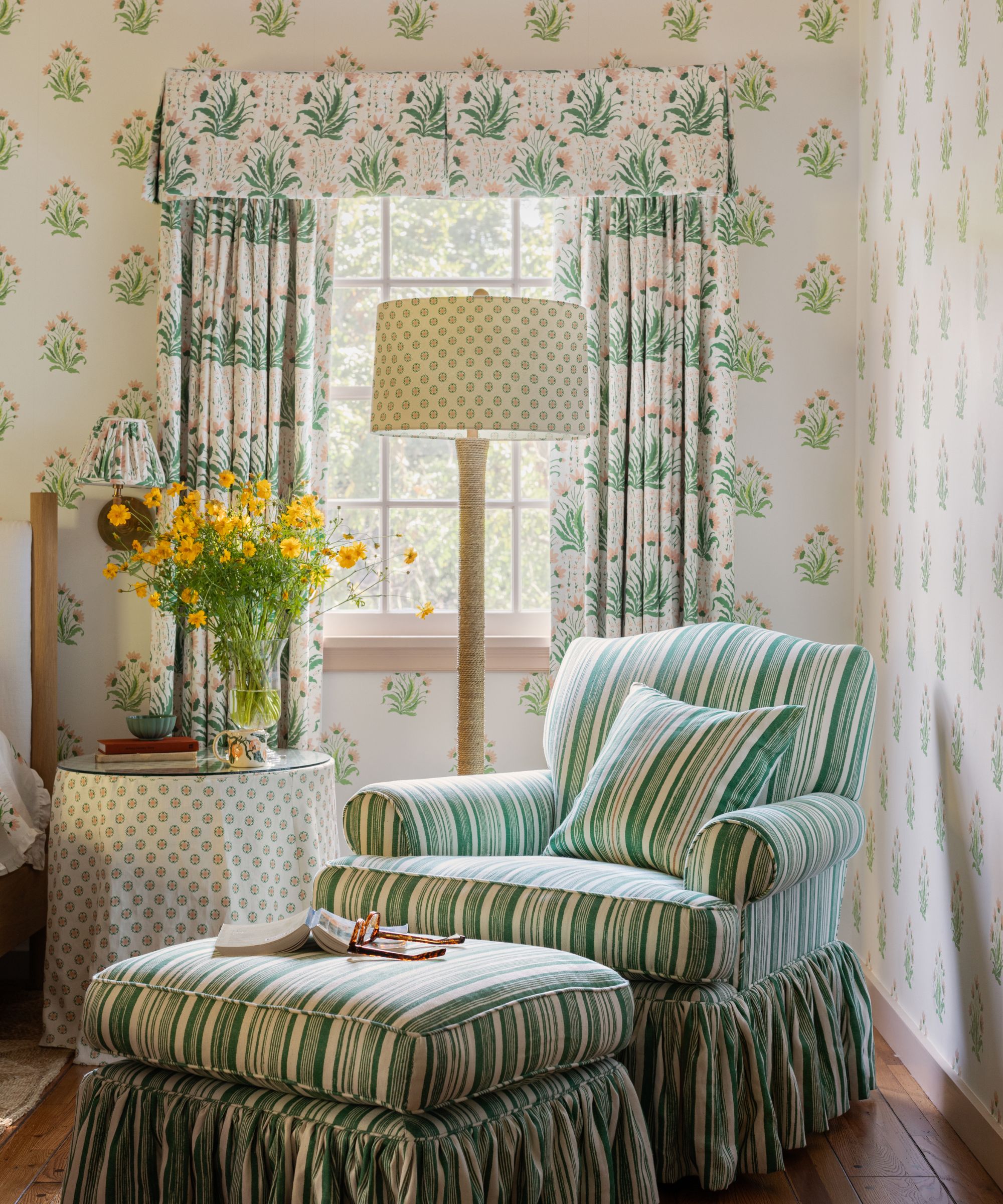
For a classic and cozy take on fabric pairings, florals and decorating with stripes are a go-to for designers.
'I've always loved mixing florals and stripes. They pair perfectly,' says interior designer Nathan Turner, who channels the two in this living room corner.
Since this fabric pairing certainly lends itself to maximalist decor ideas, Nathan recommends embracing an eclectic look by incorporating florals of varying scales: 'I like adding multiple florals. Large patterns along with small ditzy flowers and a classic stripe round out a room in the most complimentary way.'
Incorporate some floral print into your home with this neutral pillow cover, perfect for the summer months.
2. Florals, graphic patterns and ikat

'I love combining different fabric textures and prints to create a unique, layered look,' says designer Matthew Williamson.
Demonstrating his love for layering patterns and fabrics in this maximalist bedroom, the designer adds that sometimes layering three fabrics can work more effectively than two.
His formula for mixing fabrics is as follows, using floral room decor as the starting point: 'A floral pattern never seems to fail – blowsy and bold or delicate and ditsy, it always adds an air of whimsy, romance, or drama to a space. To contrast with a floral, I’d head towards something more graphic, such as a check or a stripe, which invariably looks sharp.'
'As in so many areas of design, things that come in threes always seem to work well, so I’d add in a third print such as an animal spot or maybe a classic ikat. Both of these are timeless additions and will sit well with any scheme.'
3. Linen and vintage fabrics

Combining fabrics works just as well in minimalist spaces, where the focus is on texture rather than print.
David Harris, Design Director at Andrew Martin says: 'Combining different fabric textures will add depth to a space and create an eclectic look.'
For a balanced look, David recommends pairing linen with weightier fabrics such as those you'd find when decorating with vintage. 'Linen is generally a wonderful fabric to balance heavier textures, such as vintage, embroidered, or crewel fabrics.'
For more impact, opt for vintage fabrics with prints that will balance nicely against the plain linens: 'Prints with an ethnic global feel, inspired by patterns such as Kilim and Moroccan designs, add a sense of worldly charm to a plain linen fabric.'
Made from a linen blend, this blanket will add a textural and organic feel to your sofa or bed.
4. Velvet and linen
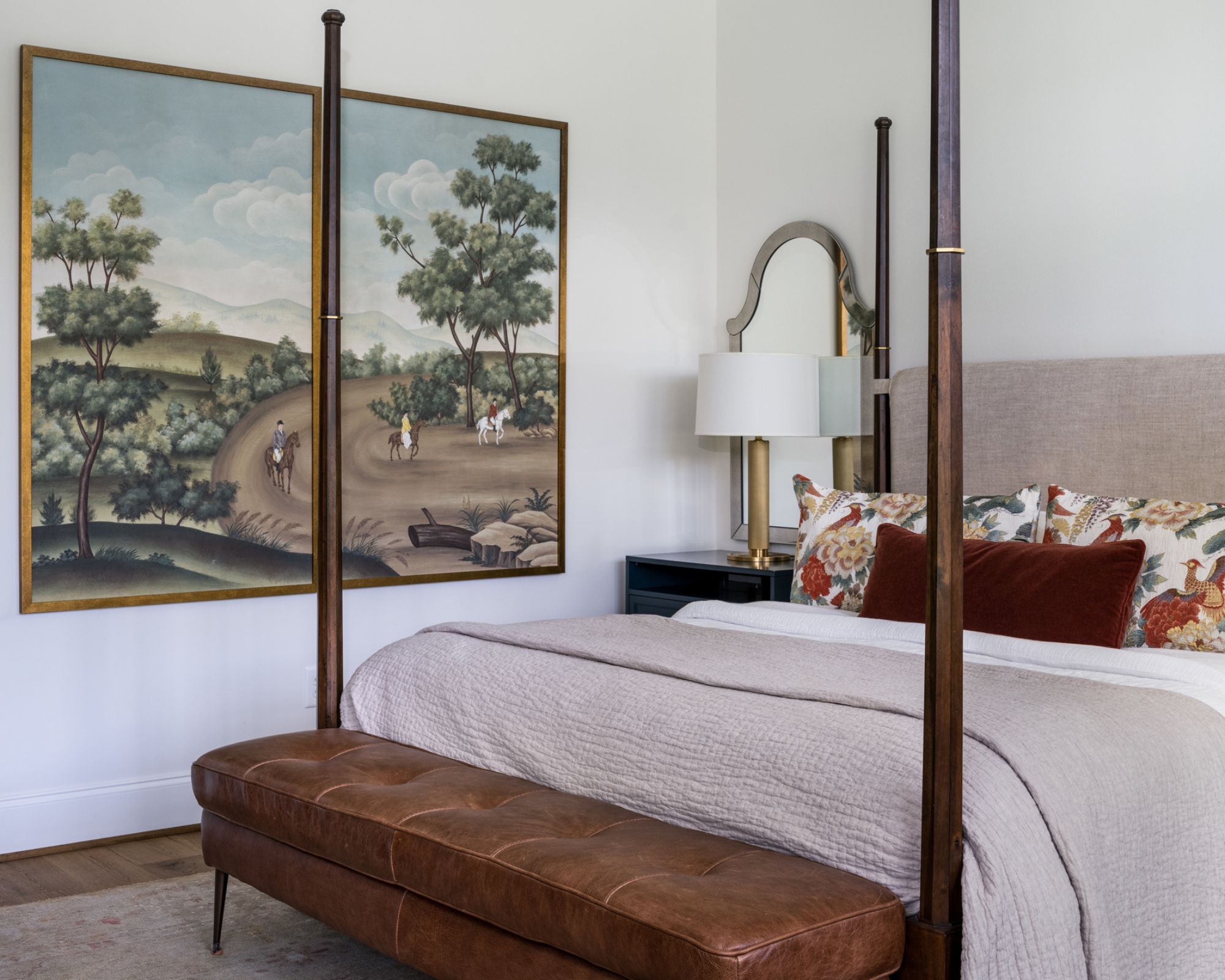
Another favorite fabric combination is linen and velvet, as used in this bedroom designed by Ellerslie Interiors. Although the room color ideas are neutral, the textures of these two fabrics add plenty of depth and interest to the space.
Laura Lubin, founder and principal designer at Ellerslie Interiors explains: 'When selecting fabrics, whether for bedding or sofa throw pillows, we strategically combine a variety of textures, colors, and patterns to create a unified and aesthetically pleasing design.'
'Among my preferred fabrics are performance velvets and textured linens, which I often pair with vibrant florals or intricate patterns. These selections not only enhance the visual appeal but also contribute to the overall coherence of the design.'
5. Velvet and bouclé
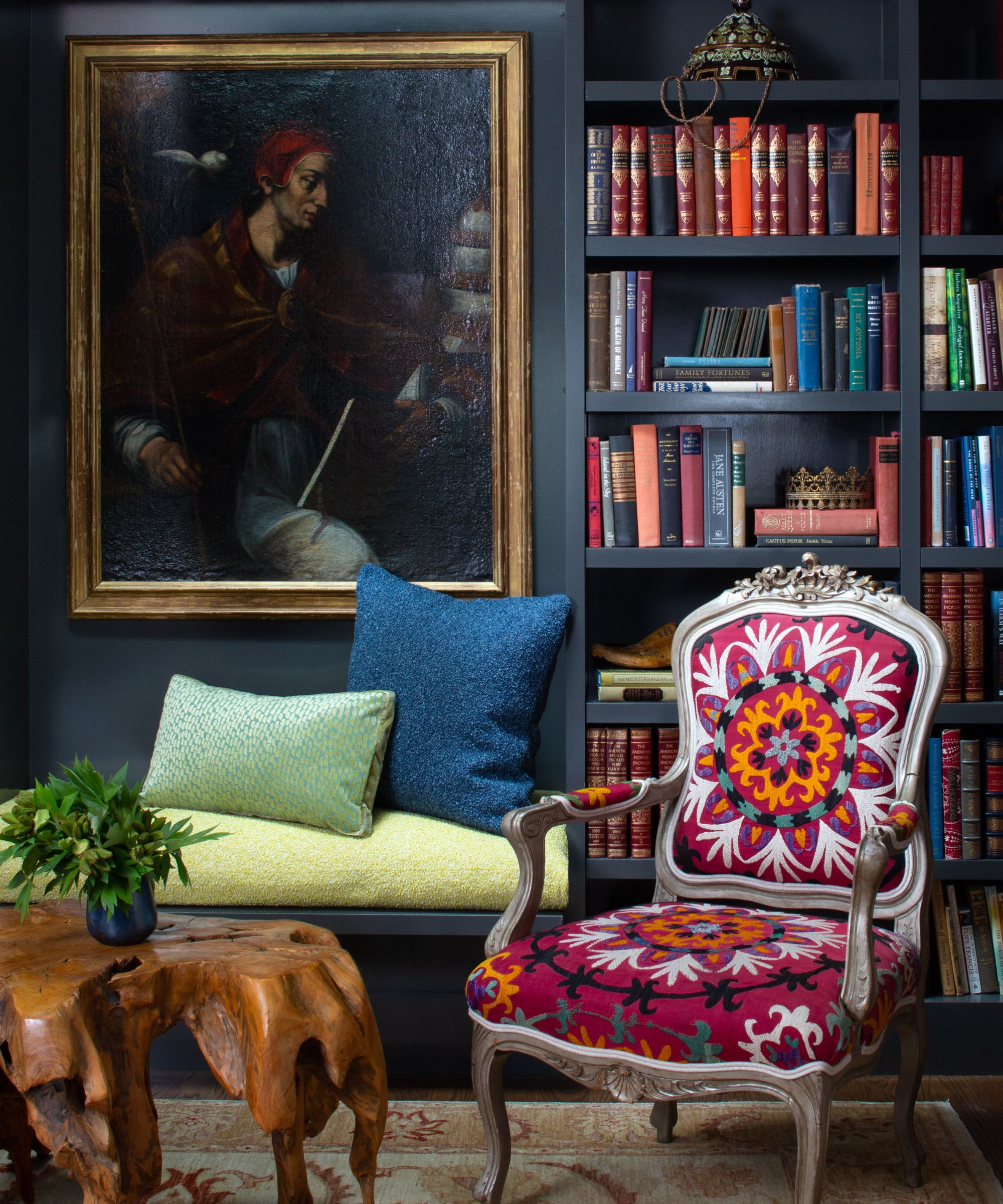
For a more opulent and luxurious take on velvet decor ideas, teaming it with bouclé will add plenty of rich texture to the home.
'For my Gem Collection with Kravet, I did some beautiful cut velvets and added an array of colorful bouclés that work perfectly with the cut velvet,' shares designer Nadia Watts.
According to Nadia, it's important to ensure contrast when working with two different fabrics: 'The key is contrast, whether in the fabric weight, pattern, color, or texture. When it comes to pattern and color, I consider scale as well as pattern type, making sure to mix and match accordingly. Achieving the right mix is all about thinking outside the box.'
If you're looking to create an opulent feel with velvet, begin with these pillows in sophisticated neutral colors.
6. Natural fabrics and heavy textures
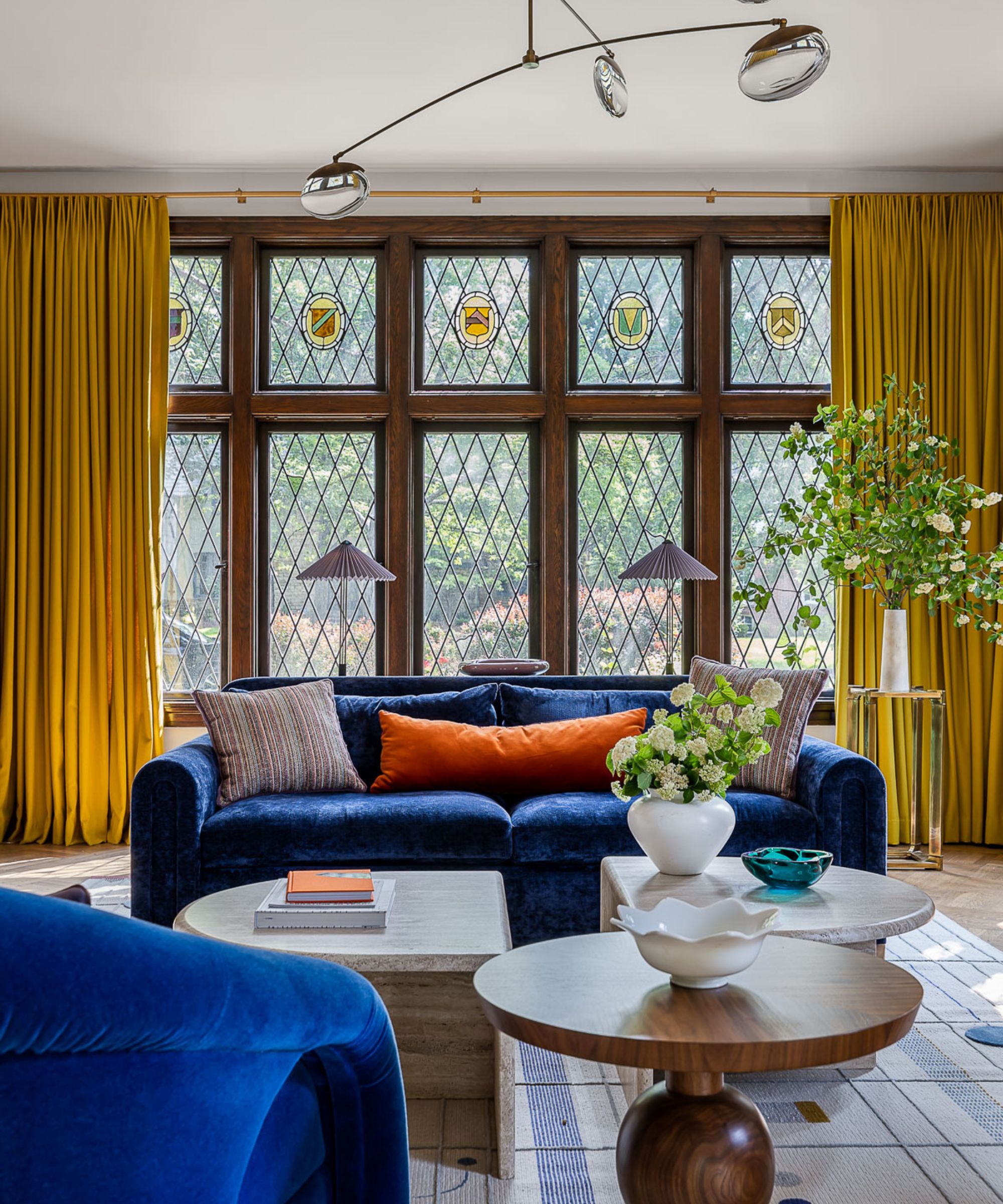
Another fabric combination that designers often turn to is contrasting a room between natural fabrics like silk and wool, and heavier fabrics such as tweed. This ensures plenty of interest through varying textures, even if patterns are restrained.
'It is absolutely essential to have a good mix of textiles in a room, particularly if you are working in neutrals or monochromatic schemes,' says interior designer Bethany Adams.
'When working within a particular palette, I'll try to utilize velvet, silk, wool, and texture – such as a bouclé or a tweed – and usually, just one pattern,' continues Bethany. 'I'm more likely to use a bold palette than a mix of patterns.'
When creating fabric combinations, keep in mind your interior style and start with the fabrics you're most drawn to. From there, you can lean into a maximalist look by layering contrasting colors and patterns through fabrics, or, keep things more streamlined and incorporate plenty of different textures when decorating with neutrals.







